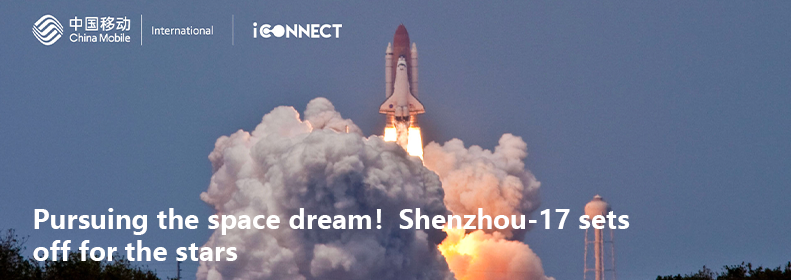
China Mobile successfully completed the communication support work for this manned spaceflight mission, assisting the Shenzhou-17 spacecraft to reach for the stars!
Thorough Planning and Establishing an Emergency Support Team “All our detailed preparations have been for today. When Shenzhou-17 soared into the sky, I felt that everyone’s hard work was worth it!” said Xie Binxian, Head of the Communication Support Team at China Mobile Gansu Company. According to Xie, to successfully complete this support mission, the team started preparations one month in advance.
During this time, to ensure sufficient capacity and smooth communication in the high-security area during the launch, China Mobile Gansu Company formed a 100-member emergency support team, with cooperation from provincial, municipal, and county levels. Responsibilities encompassed network support work from multiple dimensions, including formulating support plans, evaluating base station capacity, optimizing wireless networks, providing on-site support at the launch site, and optimizing network perception.
In the lead up to the launch, the team conducted comprehensive testing and optimization of network signals and fiber optic cable lines in areas such as the viewing area and transportation hubs. They also opened two 5G base stations, expanded 42 software and hardware capacity areas, inspected, and maintained 158 kilometers of communication lines, and deployed two emergency communication support vehicles.
Strengthening Line Inspections and Completing Comprehensive Network Optimization. On October 16, the China Mobile Gansu Company communication support team moved was stationed at the Jiuquan Satellite Launch Center to prepare for the launch. To ensure that the spectators could share all the exciting moments of Shenzhou-17's expedition without delay, the communication support team used big data analysis technology to predict the network demands of users based on the estimated number of viewers, assessed the network load and capacity at the launch site, and made advance resource allocation and expansion plans.
10 hours remaining until the launch, the temperature at the Jiuquan Satellite Launch Center approached freezing point. The communication support team once again organized professionals from various fields, including power, core, and infrastructure, to conduct multiple rounds of inspections on key areas such as fiber optic cable lines and core data centers to ensure the safe and stable operation of communication facilities.
Seven hours before the launch, the communication support team initiated the final round of support drills. On-site personnel cooperated with the back-end staff. On-site personnel stationed at key locations such as the camping park, base checkpoint, Qiantian Pavilion, and viewing platform conducted real-time testing and monitoring. Meanwhile, the back-end staff monitored the network operation 24/7 in the data center, striving for excellent 4G/5G network coverage, sufficient capacity, and zero malfunctions during the launch.
During the spacecraft launch, on-site tests showed that the download speed of the mobile 5G network in high-security area reached 815 Mbps, with an upload speed of 81 Mbps. The 4G network had a download speed of 78 Mbps and an upload speed of 11 Mbps, ensuring smooth and uninterrupted network connectivity.